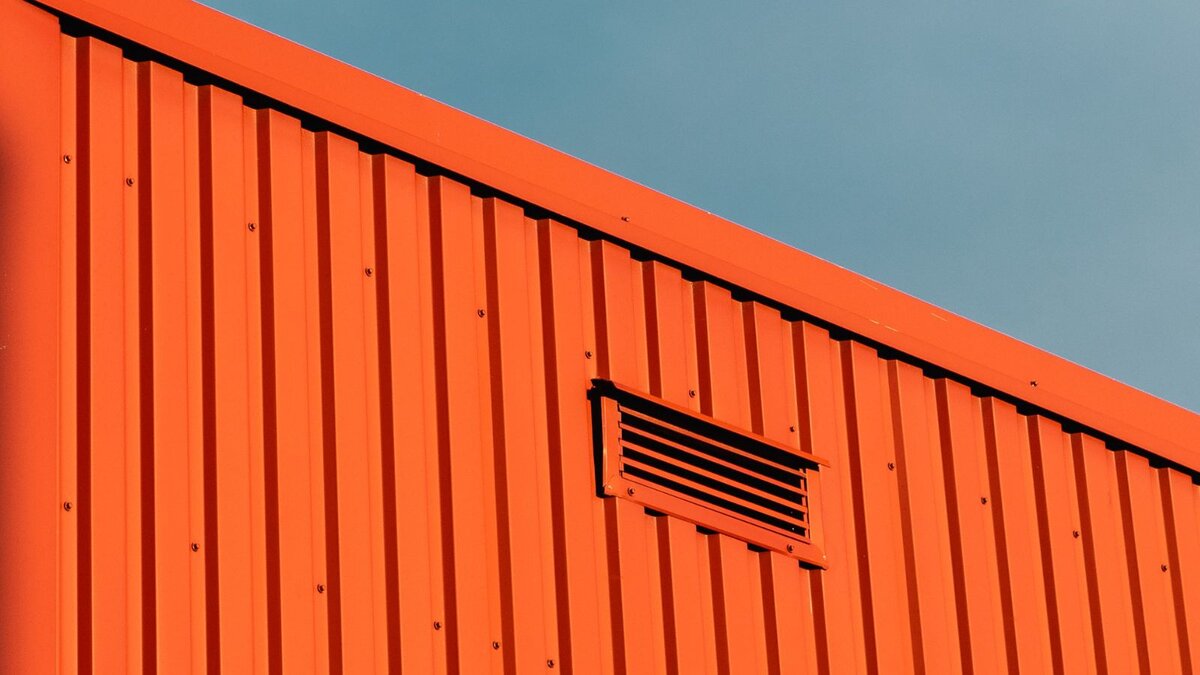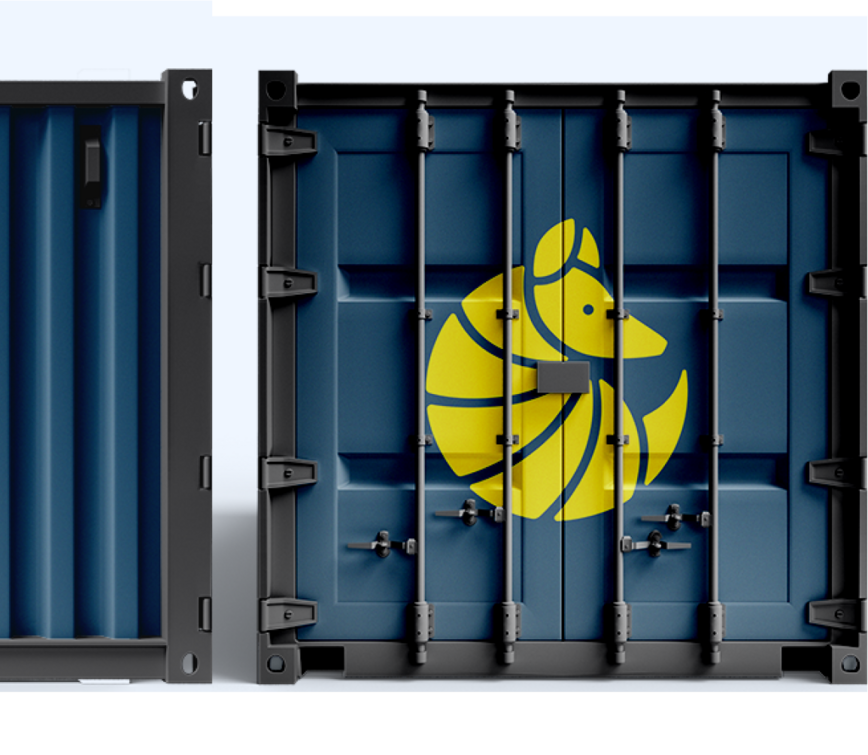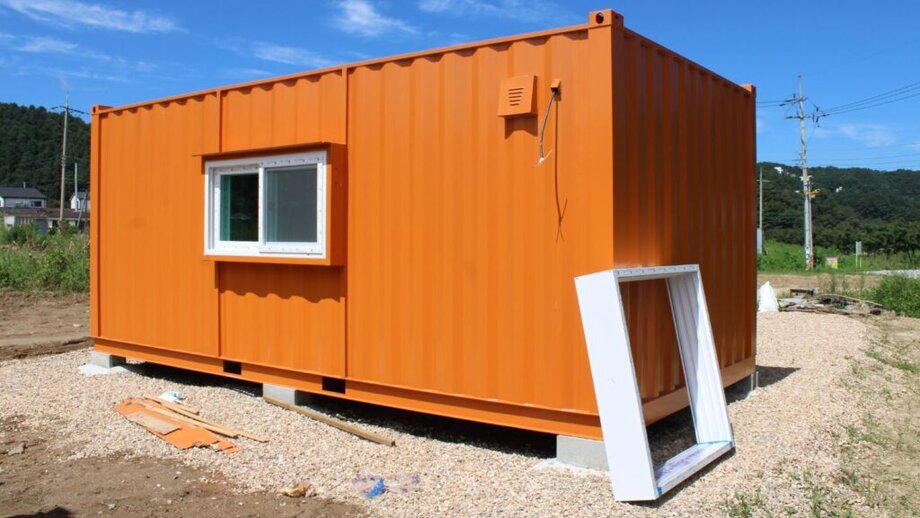Track my order
RESOURCES
How to Ventilate a Shipping Container
So you’ve purchased a shipping container. Congratulations! Before you get started packing up or modifying your container, have you considered whether it’s appropriately ventilated?



Before you get started packing up or modifying your container, have you considered whether it’s appropriately ventilated?Shipping containers come with two to four small vents fitted on their walls. These vents are designed to help the container adjust to pressure changes throughout the shipping process. While these vents provide a little ventilation for the shipping container, they might not be enough.
Depending on your location or what you’re using your container for, you may need additional or specialized ventilation to ensure your container and its contents remain safe and secure.
Why Is Ventilation for Shipping Containers So Important?

Condensation Control
Standard shipping containers are wind and watertight, making them a reliable means of protecting your belongings from the elements. That means rain, snow, and seawater shouldn’t be able to breach the container and touch the cargo sitting inside of it.
However, inclement weather isn’t the only moisture source that should be considered. It’s important to mitigate the risk of condensation, which occurs when humid air comes into contact with a colder surface. If humid air inside the shipping container touches the cold surface of the container wall — or worse, its contents — droplets of moisture will appear.
Condensation can lead to several problems when you’re storing or transporting cargo:
- The cargo could get damp. Certain types of cargo cannot stay in good condition once they’ve been exposed to moisture — like books and printed materials.
- The cargo could develop mold or mildew. This could be disastrous if you’re storing or transporting clothing or textiles.
- Cargo that is made out of metal could develop rust.
Rust
Rust isn’t just an issue for your cargo — it’s an issue for your shipping container, too. While shipping containers are made of corrosion-resistant steel, they are not impervious to rust. High levels of condensation can increase the risk of your shipping container’s interior rusting, which can weaken its structural integrity over time. This is because the rusted areas will be more vulnerable to physical damage and water intrusion.
If you spot patches of surface rust forming anywhere on your shipping container, try to address the issue immediately. To find out how you can remove rust and prevent it from coming back, read our blog on shipping container maintenance.
Fume Control
Some types of cargo — such as paints and chemicals — will emit fumes that require additional ventilation in order to be stored or transported safely.
Storing these items in a container without proper ventilation in place risks exposing you or your team to built-up fumes, which could be hazardous to your health. Ventilating your shipping container will allow the fumes to disperse safely instead of building up over time.
Temperature Control
Ventilating a shipping container can also help with temperature control. Shipping containers absorb heat from direct sunlight and the outdoor temperature. Without proper ventilation, the heat can become trapped inside. This, in certain climates, can make the interior of the container uncomfortably warm.
Be sure to consider additional ventilation if you are storing or transporting items that are sensitive to heat. This is particularly important for products that become combustible when kept in hot environments (for example, aerosol cans).

How to Ventilate a Shipping Container

You want to ventilate a 20ft shipping container (or 40ft), and know that its built-in vents aren’t enough for your storage needs. Not sure how to increase the ventilation? These are some options to consider.
Passive Vents
One of the simplest ways to increase the ventilation of shipping containers is to add “passive vents.” Passive vents rely on the wind to circulate air in and out of containers. To be effective, you will need to place pairs of vents on opposite sides of the containers. When aligned, they create a clear passage for the air to enter and exit. This is called “cross ventilation.”
Passive vent sizes should be chosen based on the size of your shipping container. For a 20ft container, we recommend using 4×4” vents. or a 40ft container, we recommend 6×6 vents. These vents should be placed on the higher points of the walls — this will help with temperature regulation since hot air rises.
Active Vents
Active vents are a mechanical solution that improves air circulation and ventilation. Unlike passive vents, they require an electrical connection to run effectively. While installing an electrical connection will require more effort and expense, it can also yield more consistent results for ventilation.
What active vents can you use? One popular option is an extractor fan, which pulls the humid air out of the container and prevents condensation from developing. Another option is a supply ventilation system. This ventilation system uses a fan to bring fresh outside air into the shipping container.
An ideal ventilation option for shipping containers is “balanced ventilation” — this uses both an extractor fan and a supply ventilation system for optimal results.
Foundation Vents
Foundation vents are passive vents that are placed on the walls just above the container floor to encourage airflow along the bottom of the container.
Foundation vents are great shipping container ventilation ideas in very specific circumstances. They should only be used on raised shipping containers being used for long-term storage. The containers could be raised off the ground via railroad ties (sometimes called wood beam foundations), concrete piers, or concrete blocks.
However, foundation vents are not the best ventilation solution for shipping containers on slab foundations. This is because rainwater could pool around the bottom of the container on a slab foundation and enter through the vent.
Turbine Vents
Turbine vents (sometimes called “whirly birds”) are installed on shipping container roofs. They are the best ventilation system options for shipping containers that are being used as permanent storage units and shipping container housing.
How do turbine vents work? The turbine sits on top of the container roof and the wind spins the turbine, sucking the air from the container’s interior. When the wind isn’t spinning the turbine, it acts as a passive vent. Some turbines are even solar-powered, allowing them to keep spinning without wind.
While a good option for containers being used for storage and homes, this type of vent isn’t ideal for shipping containers transporting goods. That’s because the roof vent will prevent the container from being stacked. Shipping containers used for shipping should therefore have vents installed along the shipping container walls, as these vents shouldn’t cause any obstructions during the shipping process and keep the container perfectly stackable.
Ventilating a shipping container shouldn’t be an afterthought. By taking the time to determine the proper ventilation based on your container use case, you can ensure that your container and its contents are safe and secure.
To learn more about choosing the right shipping container for your needs, check out Choosing The Right Shipping Container: The Ultimate Guide.

About Nina Barango
Nina Barango is an experienced content marketer and container expert with a proven track record in the tech and logistics industry. Having worked with various startups and SMEs, she bridges the world of marketing, tech and shipping containers. When she's not creating content that'll revolutionize global container trade, you can find Nina reading a book or mastering her video editing skills.







Continue Shopping
Loading cart